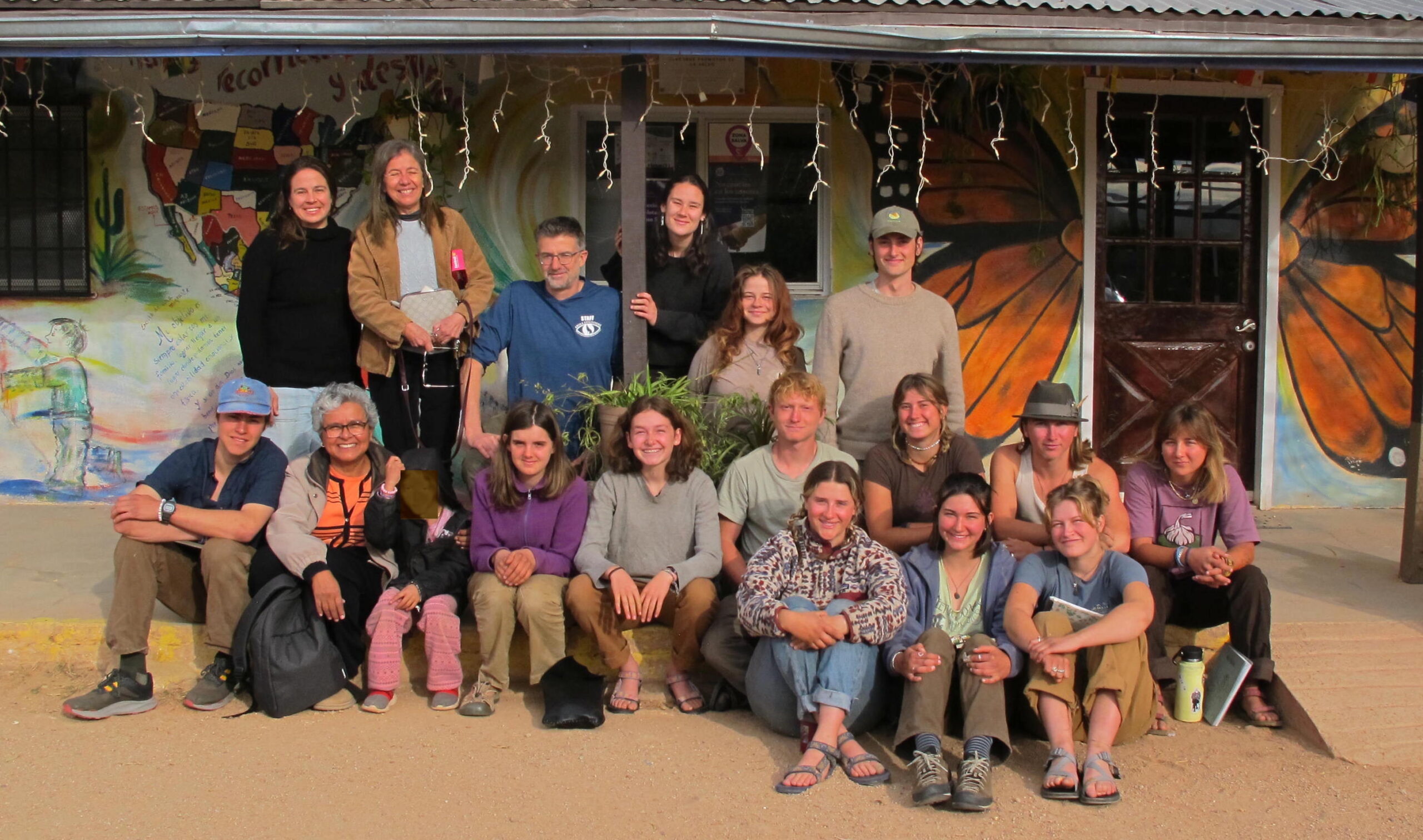Blog #6: The final blog from 2024 Legends of the Southwest Semester
The final block of the 2024 Legends of the Southwest Semester was a Borderlands Study based in Tucson, AZ and Nogales, Sonora, Mexico. It has been 2 months since we moved back and forth through the border, and while we were there the many humanitarians we encountered were preparing for what they assumed would be further militarization of the border and emboldened US vigilante groups, while the migrant families we met had to hold on to hope as they waited for their CBP1 appointments. Hope that we now, 2 months later, know is gone. Our hearts are tender…
____________________________________________________________
November 26, 2024. A few days after we rolled into Catalina State Park just outside of Tucson, Arizona, we embarked on yet another van ride in the dark hours of the early morning. Before this van ride we were never quite sure whether or not we would be spending any time in Mexico. The inimical and militaristic nature of politics on the border, particularly in a time of such uncertainty and change (Donald Trump had been elected about two weeks before we arrived in Tucson), led us to believe that the possibility of a borderlands section was getting slimmer by the day. However, not long after we arrived at Catalina clad in high-visibility vests, our instructor Emma told us that we’d be going to Mexico.
We drove south for a few hours until we arrived in Nogales, Arizona, a town right on the U.S.-Mexico border. Stepping out of the van, it was immediately clear that we were in a new space; there was no doubt that the border wall was the central, looming entity in both Nogales, Arizona and Nogales, Mexico, where we were headed. We could see the wall itself looming over a hill to our south, separating an otherwise continuous mélange of cultures that is characteristic of many border towns. As we sat down for a quick class from Liz before crossing the border, it became obvious that we were in the midst of a certain fluidity of life. For many citizens on both sides of the border, the border wall was merely an every-day checkpoint while going to work, school, the dentist, or to see their families. In other words, the border wall was not what we expected. All of us hailing from north of the 36th parallel, and all but a few of us being from New England, our only perception of the border wall had been filtered through media, bias, and about 2,300 miles of separation. It would not be a hyperbole to say that a few of us expected to find a full-scale military operation while crossing the southern border. But we soon realized that our privilege would allow for an eerily easy border-crossing experience.
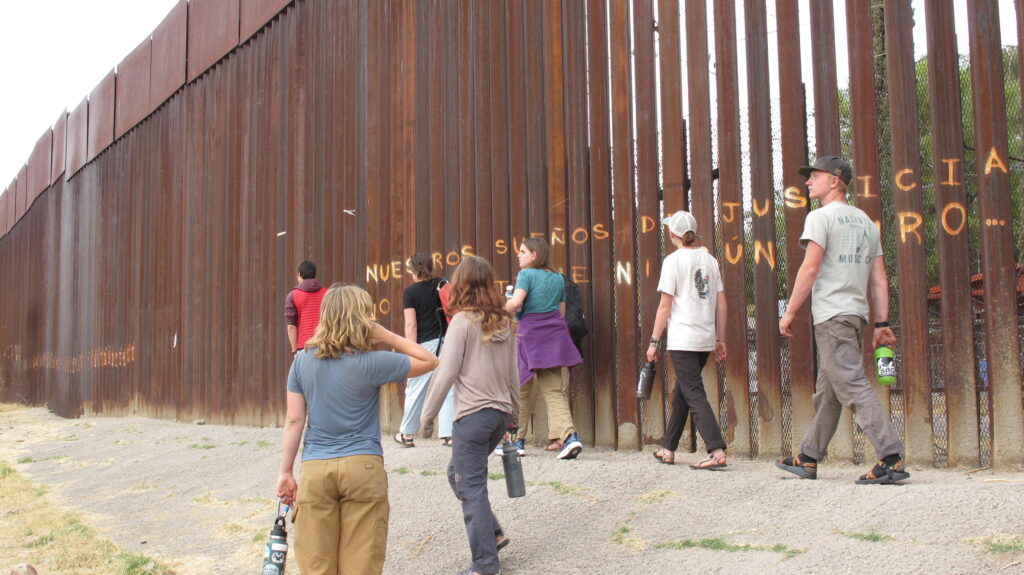
Walking across was shockingly simple and easy. We walked through a door, a metal detector, and another door. No one even asked to look at our passports. The wall itself seemed insignificant. Evenly spaced deep red bars lined with chain link fencing that you could see straight through. It was strange to think that this was the divide between two countries. The only way you could tell it was a border wall was by the graffiti protesting its existence.
-Sarah and Uli
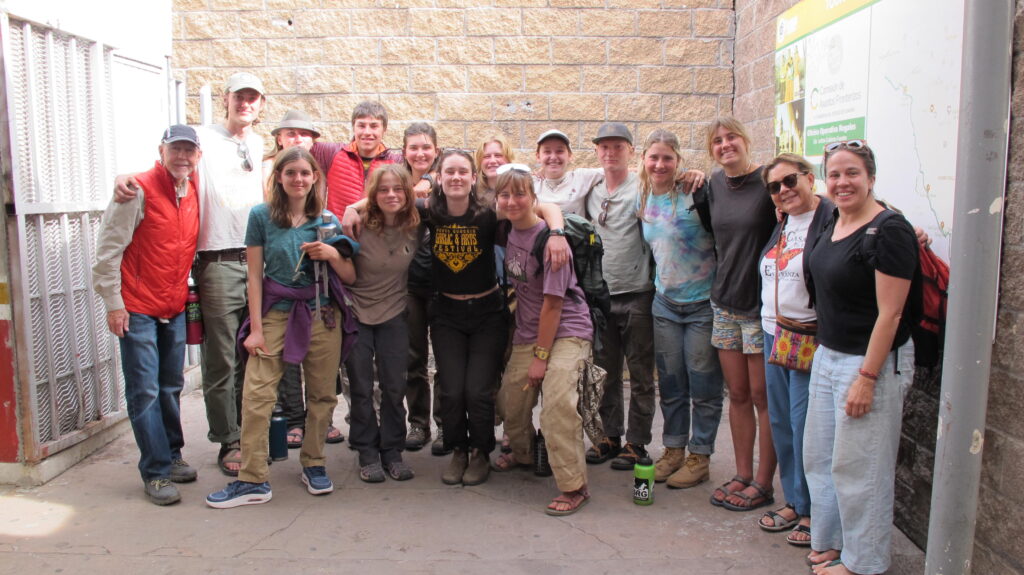 After crossing the border we walked along the wall, studying various artwork and graffiti along the way. Once we ate lunch in the small town center of Nogales, Mexico we made our way towards the migrant house where we planned to stay. Casa de la Misericordia, which translates to Mercy House, was not easy to find. After getting lost several times while trying to traverse steep, narrow, and intricate streets in a fifteen-person van, we decided to ask some locals for directions. We continued on through the complex streets, climbing higher and higher, until we reached a large black sliding door. As we approached the door it began to slowly open and a man standing guard came out to greet us. We soon realized that the black metal door that we had just crossed through was a threshold between two worlds, a divider between perception and reality, our world and their world, despair and hope. We didn’t know what to expect of Casa de la Misericordia and as a result we could only base our expectations off of skewed and misled preconceptions. Preconceptions of migrants, Mexico, asylum seekers, the people that have been grossly misrepresented in most all media that we consume. But as we began to roll up the steep driveway, past a vibrant playground and basketball court overlooking the rolling hills of Nogales, we were surrounded by a mysterious warmth. There seemed to be an essence of hope in every construction, every tree, every mural. We exited the van and were immediately surrounded by a crowd of curious children who, as far as language capabilities go, expected much more from us than we could confidently offer. Without skipping a beat we joined the children. Enveloped by their jovial youthfulness we found ourselves playing in their games as if we ourselves were seven or eight years old.
After crossing the border we walked along the wall, studying various artwork and graffiti along the way. Once we ate lunch in the small town center of Nogales, Mexico we made our way towards the migrant house where we planned to stay. Casa de la Misericordia, which translates to Mercy House, was not easy to find. After getting lost several times while trying to traverse steep, narrow, and intricate streets in a fifteen-person van, we decided to ask some locals for directions. We continued on through the complex streets, climbing higher and higher, until we reached a large black sliding door. As we approached the door it began to slowly open and a man standing guard came out to greet us. We soon realized that the black metal door that we had just crossed through was a threshold between two worlds, a divider between perception and reality, our world and their world, despair and hope. We didn’t know what to expect of Casa de la Misericordia and as a result we could only base our expectations off of skewed and misled preconceptions. Preconceptions of migrants, Mexico, asylum seekers, the people that have been grossly misrepresented in most all media that we consume. But as we began to roll up the steep driveway, past a vibrant playground and basketball court overlooking the rolling hills of Nogales, we were surrounded by a mysterious warmth. There seemed to be an essence of hope in every construction, every tree, every mural. We exited the van and were immediately surrounded by a crowd of curious children who, as far as language capabilities go, expected much more from us than we could confidently offer. Without skipping a beat we joined the children. Enveloped by their jovial youthfulness we found ourselves playing in their games as if we ourselves were seven or eight years old.
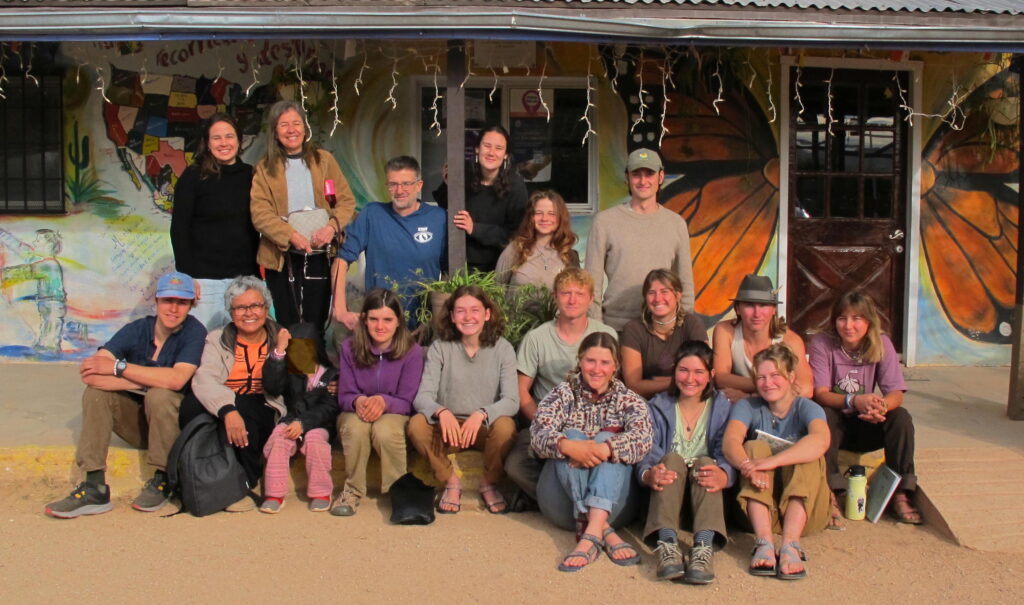
First thing, we get a tour of Casa de la Misericordia. The kids all say, “Hola!,” smile and wave. School here has been dismissed for the day and the children are running all over, laughing. As soon as the tour has ended, we’re ushered into the lower courtyard by the bands of kids. This little girl runs up to me and reaches up to my face, I lean down to get closer and she takes the sunglasses right off my head, promptly puts them on. They have these big mirrored lenses, and with her patterned pink leggings, pink shirt, and pink skirt, she looks like some child pop-star. She takes off running and I give mock chase, she’s laughing, and I’m laughing.
-Sol and Cecily
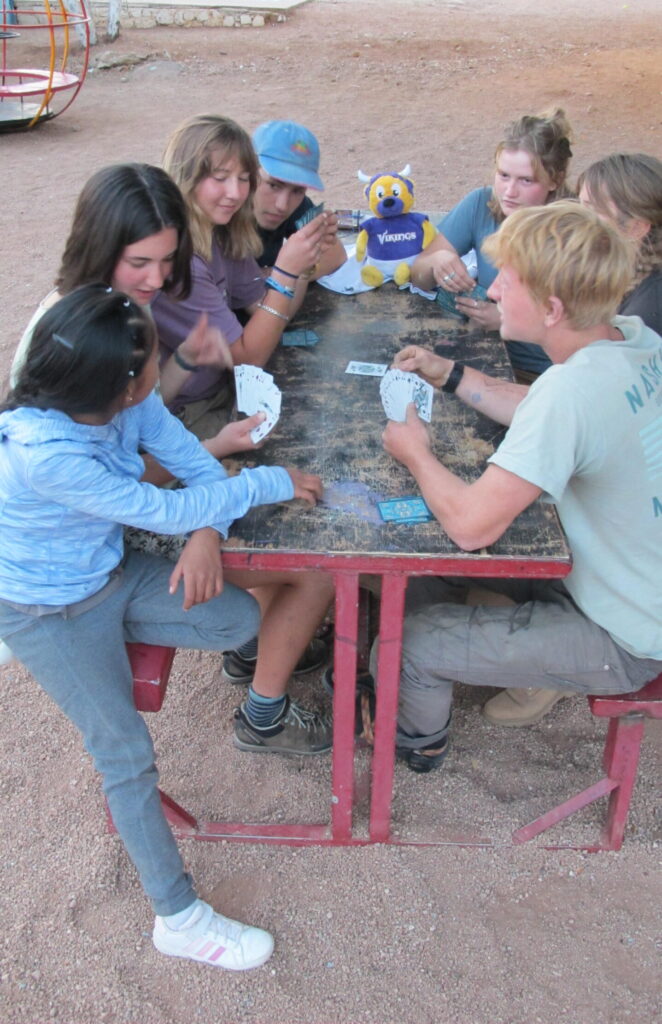
“Misericordia” is an interesting word. In its native language it means “mercy.” It symbolizes hope and understanding and camaraderie. But it also resembles the English word “misery.” Both mercy and misery are deeply embedded in the very fabric of Casa de la Misericordia. Joining in with the kids’ laughter and joy, it was easy to forget the desperate and sickening circumstances that preclude Casa de la Misericordia’s very existence. Throughout our stay at Casa de la Misericordia we explored the relationship between beauty and suffering. We questioned whether they could exist together. We questioned whether they emphasize one another and are both necessary to create a fulfilling and meaningful experience.
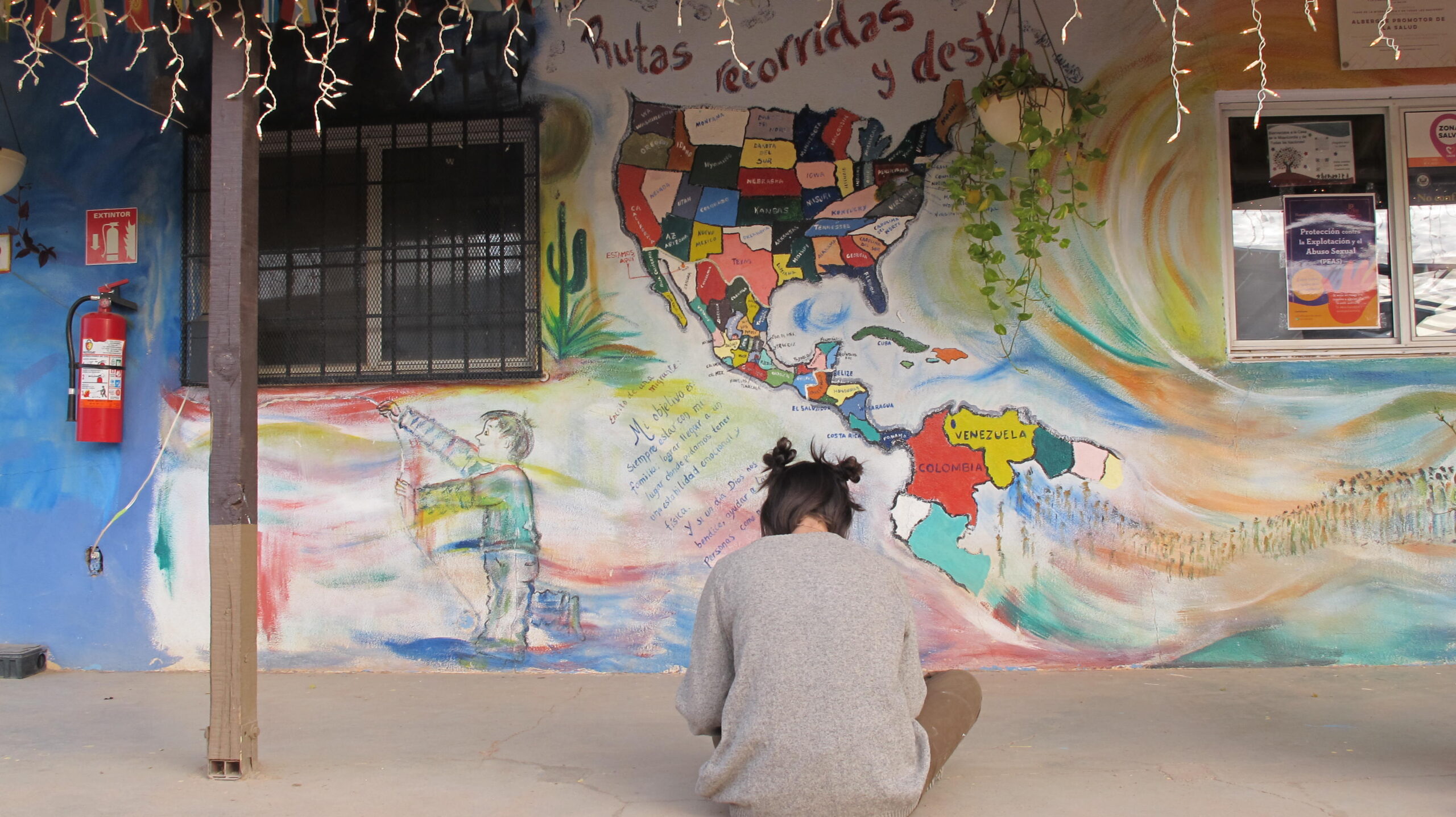
Let me tell you about this place, so different from what we know / where our consequences catch up to us and we reap the seeds we sowed. / I saw a group of people, connected by grief and pain / and yet they somehow found the joy of laughter everyday. / I saw a place of desperation / where that flame burns bright from sorrow / where every piece of hope is another chance for tomorrow.
-Savi
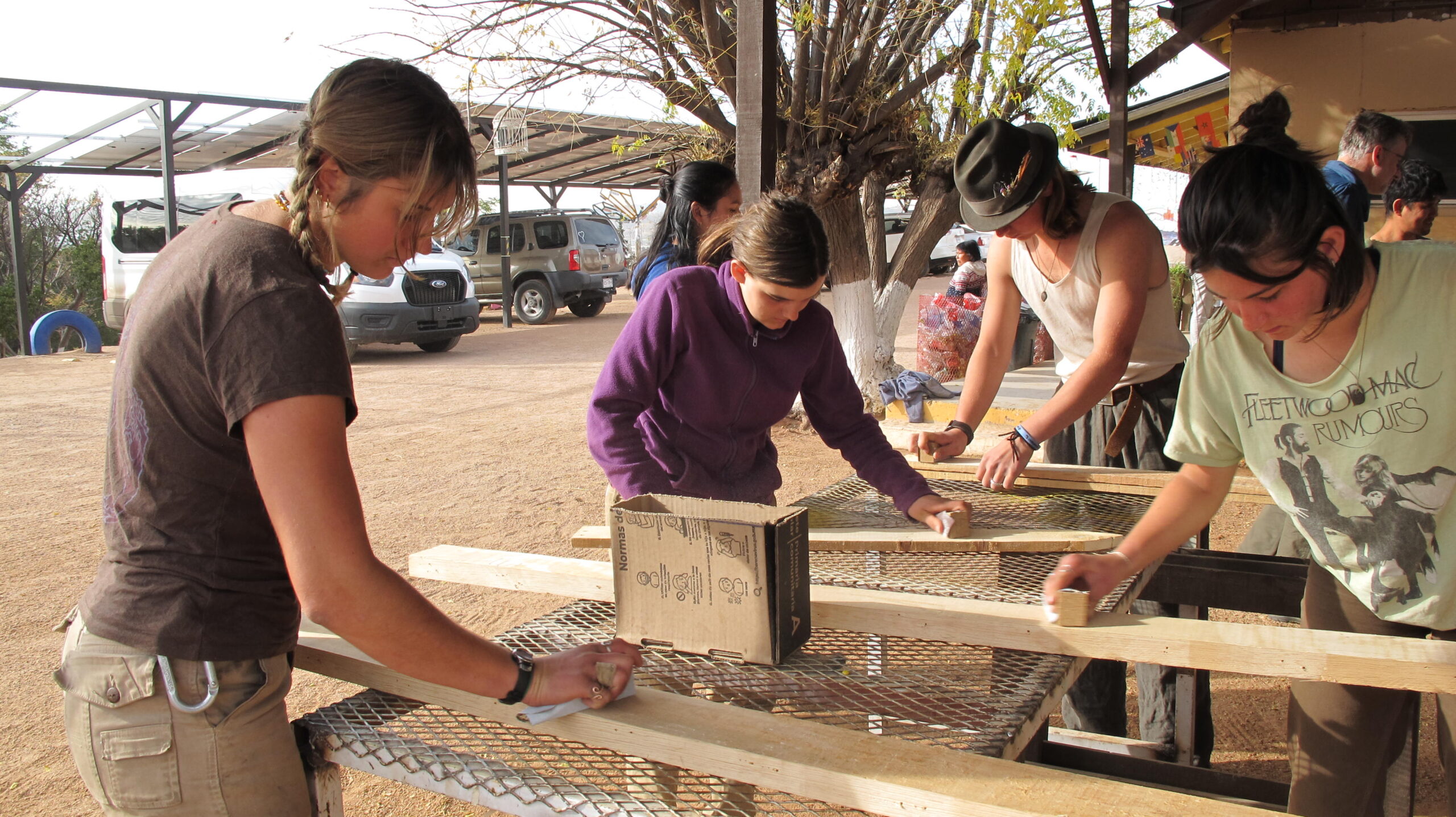
Our time at Casa de la Misericordia was—and I can confidently speak for all of us—profound. Through community work and service projects, intensive language study, deep interpersonal connections with strangers, and meaningful conversations with one another, we all reached a unique, higher level of thought and self-awareness that we couldn’t have reached otherwise. Many of us couldn’t shake the feeling, which we repeatedly tried in vain to articulate, that whatever was going on, whatever it was that we were a part of for that short and finite amount of time, was universally special. It came as no surprise when the good bye was more difficult than we could’ve imagined.
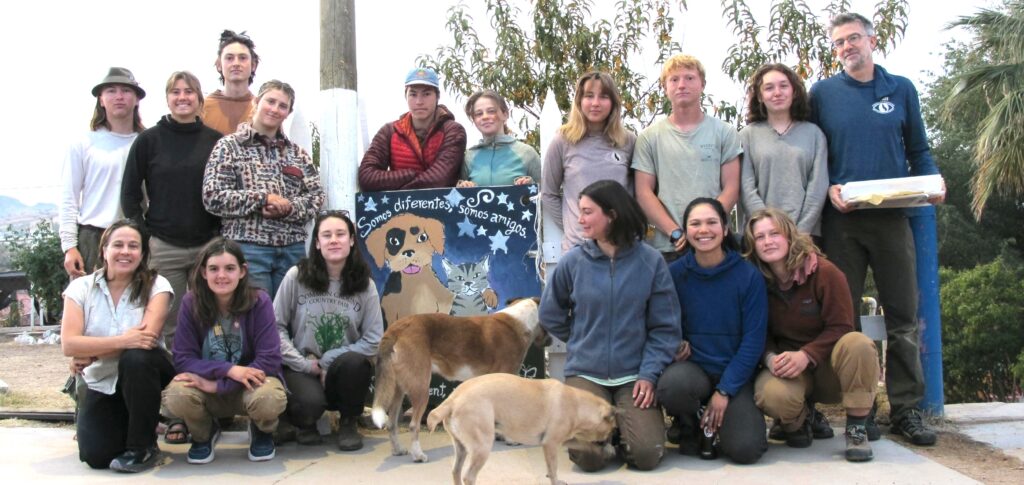
Our time at Casa de la Misericordia flew by. As we had to say goodbye to everyone at dinner, many tears were shed. Both from us and the kids. They kept asking us, “When are you coming back?” That night we ate our final dinner there and one of our instructors was asked what she thought about the place. Struggling to express the complexity of the place with limited language skill, she was stuck saying that ‘it was beautiful.’ That wasn’t quite the response of the people there. They shared how they felt trapped and unable to support their families. The reality of this place was a waiting ground, stuck between worlds. People were there for 5, 10, even 15 or more months at a time, just waiting. The walls we had originally thought of as a safety net were just another border holding them back. So much joy, but so much sorrow at the same time.
-Hazel and Kaia
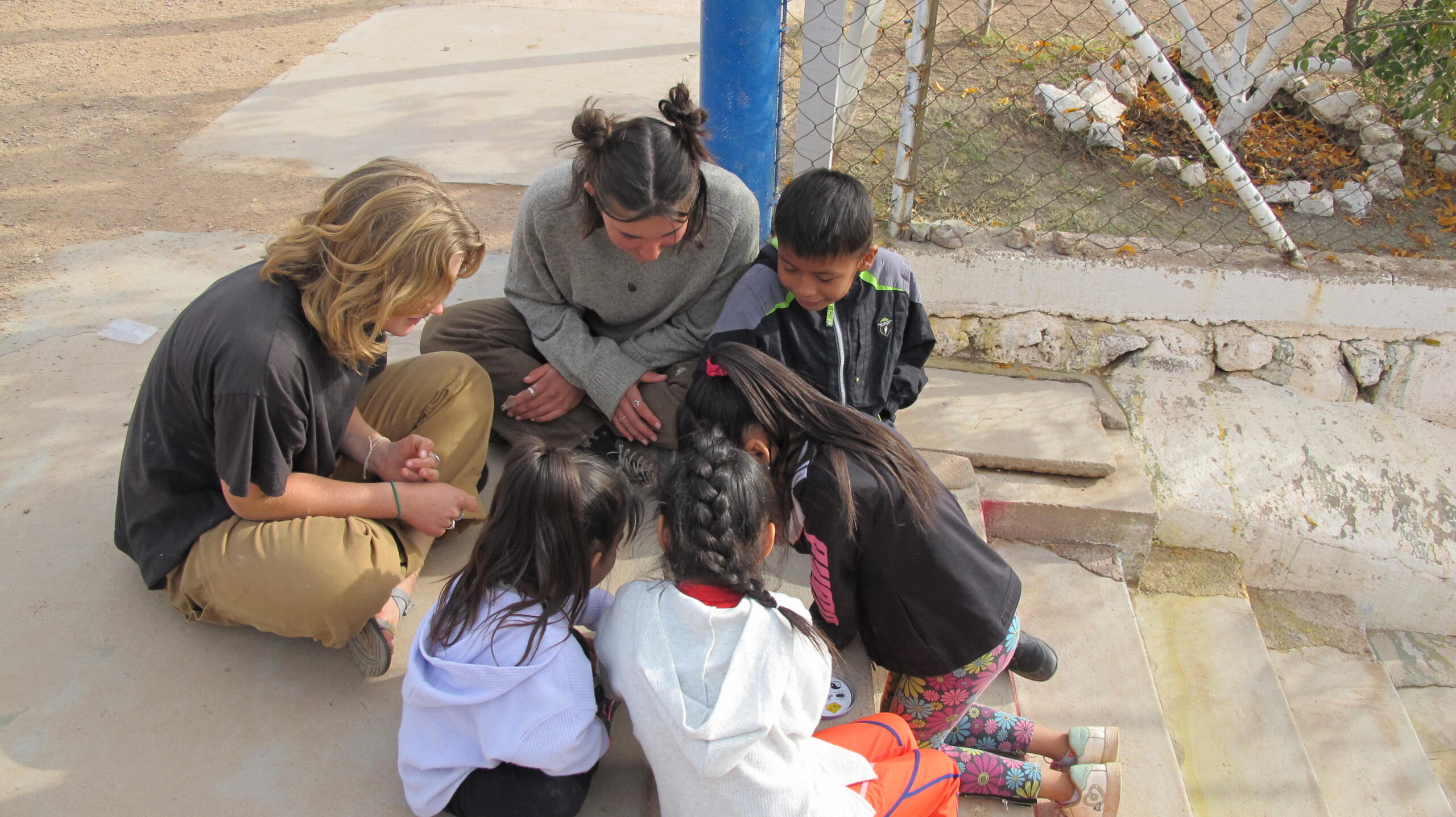
We left Casa de la Misericordia in the early morning. The sun had recently risen when we walked down to the central courtyard to greet the morning and give our blessings to the migrants we had stayed with. Dogs were barking in the crowded streets, a single rooster crowed as if speaking to himself, and, above all the other competing and overwhelming noises, several doves serenely let out their mournful song.
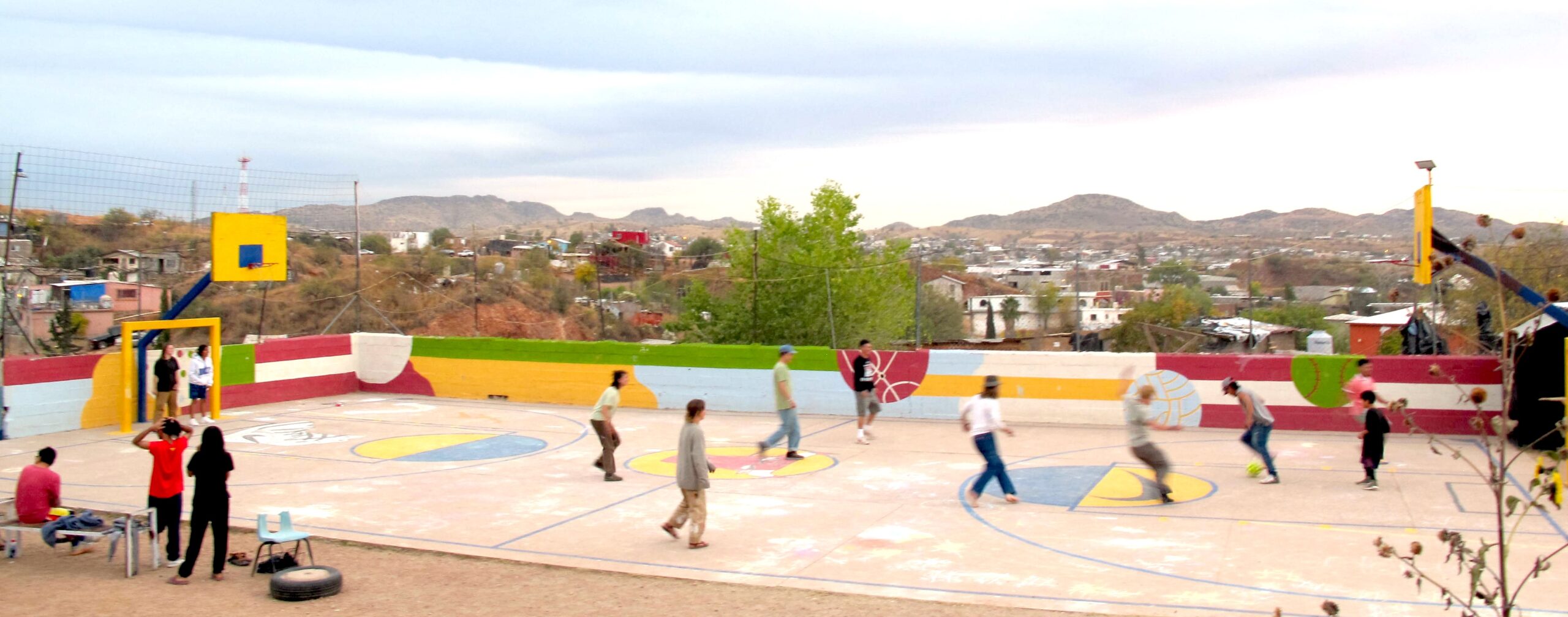 We drove away in the van and, being much more accustomed to the city since trying to find Casa de la Misericordia, we easily found our way back to the border. Our second border crossing seemed to have more weight to it. Crossing into America from Mexico, instead of the other way around, carries lots of implicit political and racial complexities. Once more our privilege came out on full display.
We drove away in the van and, being much more accustomed to the city since trying to find Casa de la Misericordia, we easily found our way back to the border. Our second border crossing seemed to have more weight to it. Crossing into America from Mexico, instead of the other way around, carries lots of implicit political and racial complexities. Once more our privilege came out on full display.
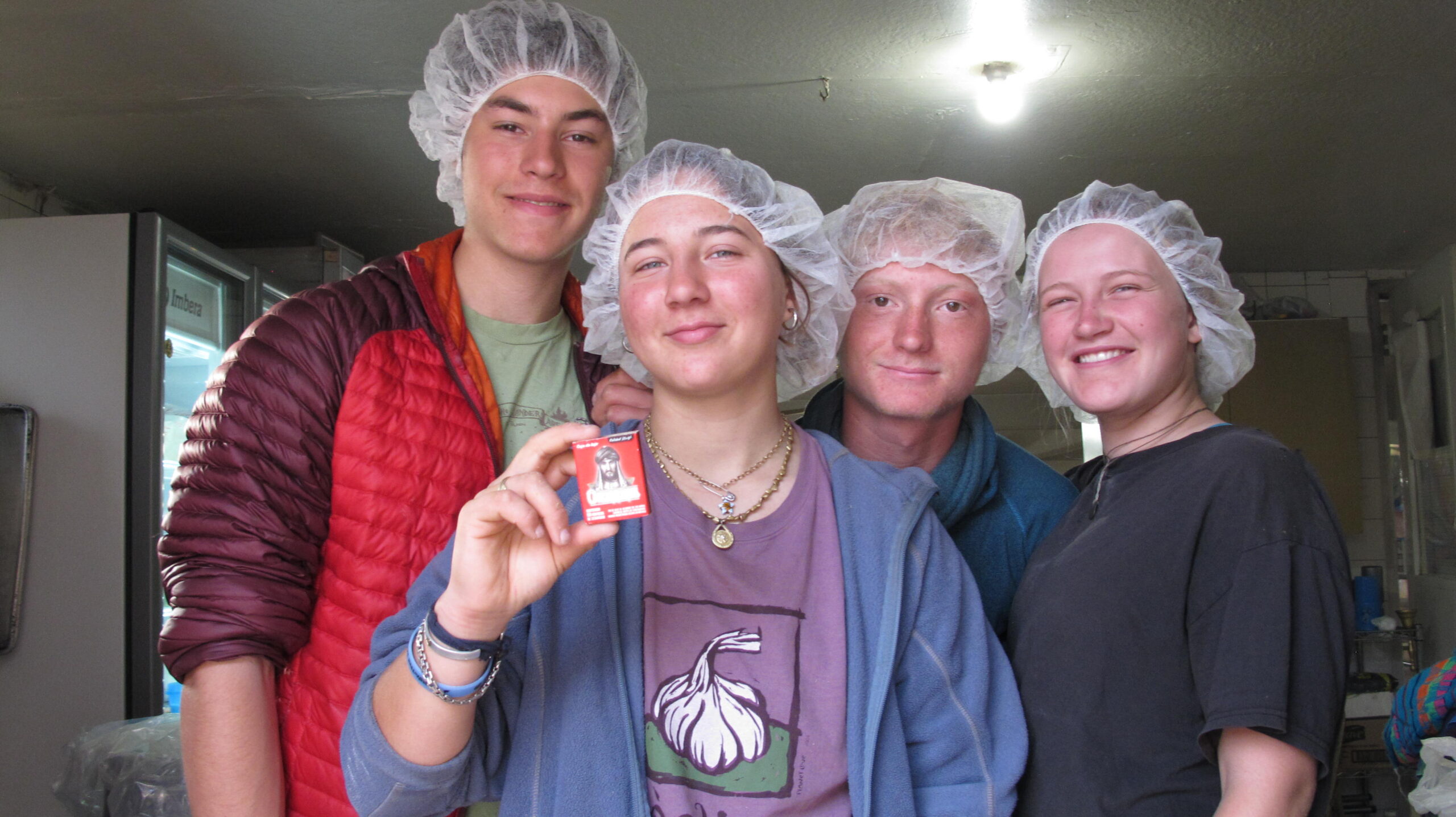 Our trip back across the border was surprising, but not in the way we had expected. Starting off again with a circle under the hot sun, we were handed our passports. What we agreed on was simple, do not speak unless spoken to, be truthful but simple. Walking into that same corral-like tunnel, we all started looking around for something. It came in the form of a line stretching out around the corner. A man approached us and quickly ushered us past the line with little explanation. We were given quick glances of confusion as we passed by. It was only later when I had time to think that I realized we skipped the line because we were white. Because someone looked at us and thought, ‘They’ll make it easy, let’s just let them go.” I thought back to the families at Casa de Misericordia. Families waiting, dreaming, hoping for years, maybe their whole lives to cross a border I had gotten through with ease on a random weekend.
Our trip back across the border was surprising, but not in the way we had expected. Starting off again with a circle under the hot sun, we were handed our passports. What we agreed on was simple, do not speak unless spoken to, be truthful but simple. Walking into that same corral-like tunnel, we all started looking around for something. It came in the form of a line stretching out around the corner. A man approached us and quickly ushered us past the line with little explanation. We were given quick glances of confusion as we passed by. It was only later when I had time to think that I realized we skipped the line because we were white. Because someone looked at us and thought, ‘They’ll make it easy, let’s just let them go.” I thought back to the families at Casa de Misericordia. Families waiting, dreaming, hoping for years, maybe their whole lives to cross a border I had gotten through with ease on a random weekend.
-Cedar and Gabe
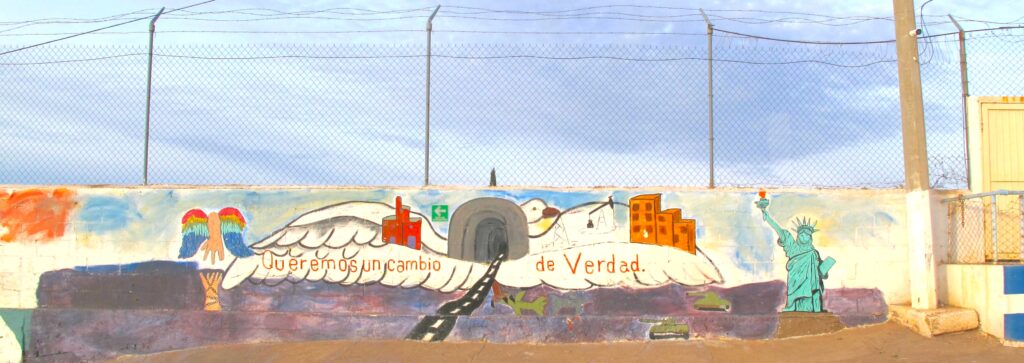
Although our privilege starkly contrasted the difficult lives of those with which we had just become close at Casa de la Misericordia, we understood the value of our advantageous position in society and how we could use it to support rather than exploit those in need. After crossing the border back into America, we loaded into the van and drove northwest to Arivaca, Arizona, to meet two volunteers for No More Deaths, a humanitarian aid nonprofit organization focused on helping migrants in the borderlands. After eating breakfast with the two volunteers, Isaac and Tyler, we followed them further northwest to a saddle pass in the Baboquivari Mountains. That area of wilderness, due to its unique geographical features, acts as a funnel for migrants who travel by foot north through the Sonoran Desert toward America. “Prevention through Deterrence” is one strategy the US has implemented to deal with migration: the border wall ends abruptly in the harshest desert environment, so that those who wish to cross will be more likely to not survive the journey. As with many other attempts at deterrence, it doesn’t work. The humanitarians in this area are concerned, not with the politics of the border (“Who can keep up? The policies are changing constantly!”), but with saving human lives and preventing the deaths on US soil. With mountain ranges both to the east and to the west, migrants follow a long road directly through the saddle pass where we then found ourselves with Isaac and Tyler.
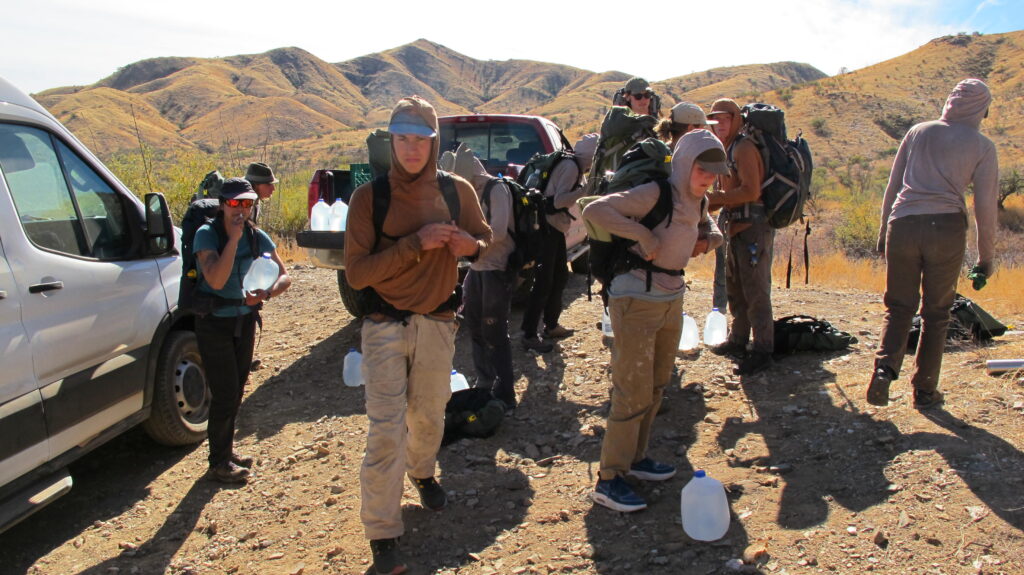
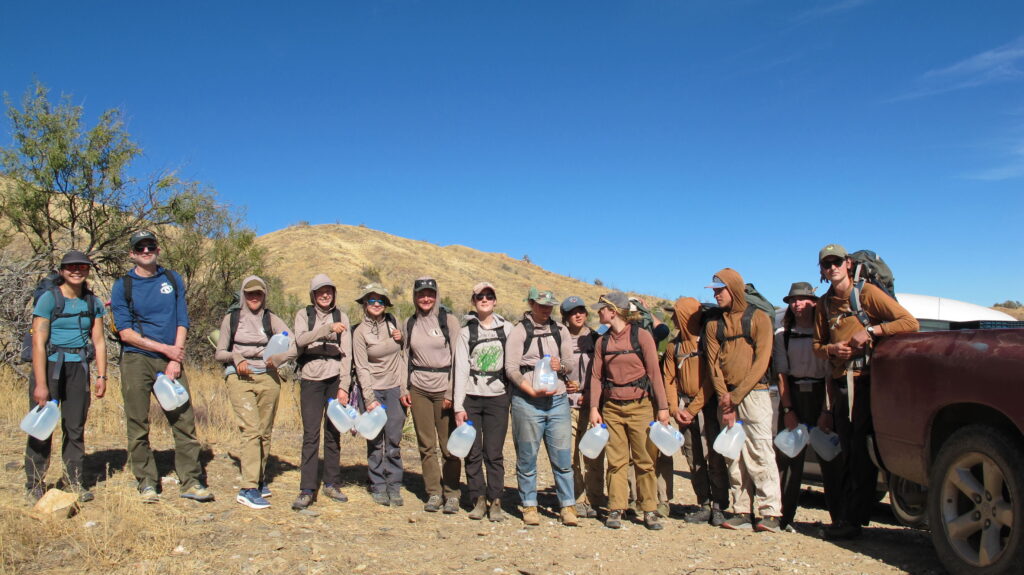 We hopped out of the van and loaded our backpacks with a combined total of 60 gallons of water, plenty of snacks, and warm clothes. We hiked up to the pass through the blazing heat–a harsh reminder of the journey that many, like our friends from Casa de la Misericordia, could have to endure–and split into two groups. One group went left, up and over a steep trail towards one water drop, a place where migrants can find water, snacks and warm socks to help them survive their trek through the desert. The other group went right, to a water drop much closer by. None of us expected the water drop to be easy. The nature of our task was intertwined with a journey of desperation and pain and struggle. Even so, none of us expected to see what we saw as we approached the drop sites. One group watched as two Border Patrol trucks came screaming down the dirt road towards them and a helicopter circled overhead, while another group bore witness to this:
We hopped out of the van and loaded our backpacks with a combined total of 60 gallons of water, plenty of snacks, and warm clothes. We hiked up to the pass through the blazing heat–a harsh reminder of the journey that many, like our friends from Casa de la Misericordia, could have to endure–and split into two groups. One group went left, up and over a steep trail towards one water drop, a place where migrants can find water, snacks and warm socks to help them survive their trek through the desert. The other group went right, to a water drop much closer by. None of us expected the water drop to be easy. The nature of our task was intertwined with a journey of desperation and pain and struggle. Even so, none of us expected to see what we saw as we approached the drop sites. One group watched as two Border Patrol trucks came screaming down the dirt road towards them and a helicopter circled overhead, while another group bore witness to this:
During the water drop, we discovered that someone had slashed the water jugs. Knowing that someone was so blatantly attempting to end human lives was sickening. The possibility that it could be Border Patrol was worse. This has happened before–if it happens again, they’ll move the drop off location, or set up a camera.
-Cinder and Nalia
After our life-changing experiences at Casa de la Misericordia, seeing vital supplies carelessly destroyed by spiteful people was devastating. We asked ourselves what would we do if we had biked 15 miles in the unwavering Arizonan sun and arrived at our water resupply spot to find a massacre of life-saving resources. But instead of biking we had walked. And instead of 15 miles it was closer to 30. And instead of being able to call our support vehicle on our SAT phone we had to keep trudging on through the sand and cactus spines and heat, wondering whether or not we would make it to where we were going. If there was one day that I could characterize as being the most cataclysmic in the group’s understanding of the severity of the border crisis, it would be this day in the Baboquivari Mountains with Isaac and Tyler.
We got back to Catalina late that night and were so tired and weary that we set up camp in the wrong site. The next morning we planned to attend a Sunday service at Southside Presbyterian church in Tucson. Again, none of us truly knew what to expect. We knew that the church’s former pastor, John Fife, was more or less a living legend. We had heard his name every so often in talking with activists, migrants, and community members, always accompanied by endless praise and awe; he was a co-founder of the Sanctuary Movement and a humanitarian activist in the Borderlands.
We all came from varied religious backgrounds. Some of us had attended church most Sundays for our whole lives. Others who had never been to church, myself included, were wary of an all-out attempted conversion. But Southside Presbyterian felt less like a religious space and more like a communal meeting ground for hope, joy, and understanding. We sang moving hymnals and took communion with a diverse set of church members in the most beautiful, round chapel designed after a kiva. Seeing the myriad types of people who were coming together under one church in such a divisive region of our country made it clear that Southside Presbyterian was a special place. Even so, we weren’t aware of the true significance of that small wooden church in Tucson until we sat down with John Fife after the service.
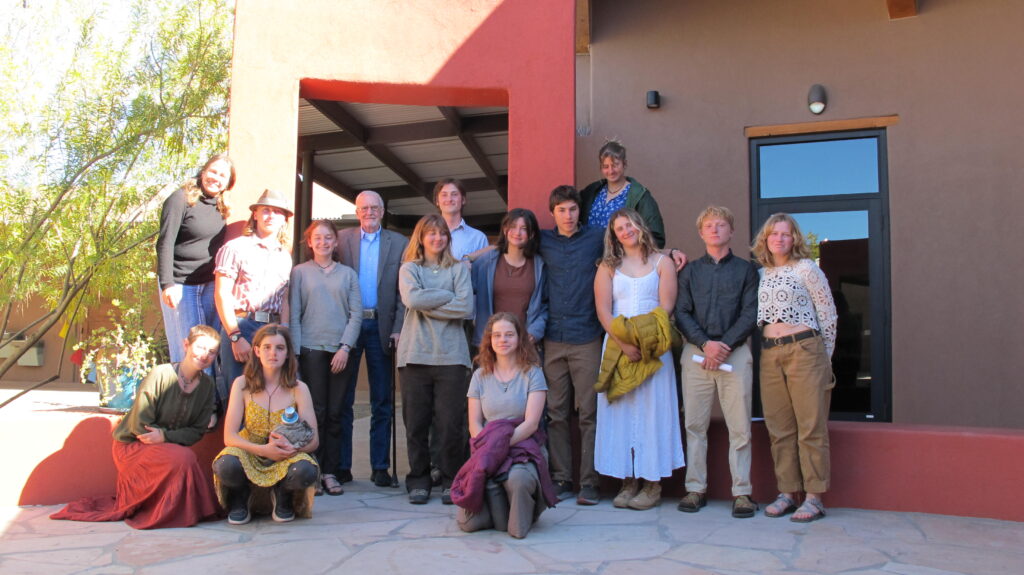 After exiting the room where the service was held we walked across a large sunny courtyard to a central meeting room, where we briefly connected with many church members and learned more about Southside Presbyterian. Afterwards we were led to a small side room with a few leather couches, large windows, and a single rolling chair placed in the middle of the floor. And then John Fife walked in, a smiling man of 85 brandishing blue jeans and a large belt buckle. After introductions he told us the long and winding story of Southside Presbyterian, with a focus on the church’s significance in the Sanctuary Movement. The story of the church, accompanied by a detailed history lesson (including, but not limited to, Cesar Chavez’s brief stay at Southside Presbyterian while waiting for the law to get off his back) had us students in a perpetually slack-jawed state of awe. After John Fife’s close friend, scholar and rancher Jim Corbett became enraged by the mistreatment of a Central American migrant on the southern border in the 1980s, he made it his goal to shuttle as many migrants as possible across the southern border and find refuge for them. When Corbett pitched this idea to Fife, his first reaction was one of fear and reservation. But Corbett and Fife (with the help of a phone call from a haughty New York lawyer beginning with the words “listen up, dummy”) slowly honed and consolidated their legal defense and brought to life the concept of civil initiative, a close relative of Ghandi and Dr. King’s civil disobedience.
After exiting the room where the service was held we walked across a large sunny courtyard to a central meeting room, where we briefly connected with many church members and learned more about Southside Presbyterian. Afterwards we were led to a small side room with a few leather couches, large windows, and a single rolling chair placed in the middle of the floor. And then John Fife walked in, a smiling man of 85 brandishing blue jeans and a large belt buckle. After introductions he told us the long and winding story of Southside Presbyterian, with a focus on the church’s significance in the Sanctuary Movement. The story of the church, accompanied by a detailed history lesson (including, but not limited to, Cesar Chavez’s brief stay at Southside Presbyterian while waiting for the law to get off his back) had us students in a perpetually slack-jawed state of awe. After John Fife’s close friend, scholar and rancher Jim Corbett became enraged by the mistreatment of a Central American migrant on the southern border in the 1980s, he made it his goal to shuttle as many migrants as possible across the southern border and find refuge for them. When Corbett pitched this idea to Fife, his first reaction was one of fear and reservation. But Corbett and Fife (with the help of a phone call from a haughty New York lawyer beginning with the words “listen up, dummy”) slowly honed and consolidated their legal defense and brought to life the concept of civil initiative, a close relative of Ghandi and Dr. King’s civil disobedience.
In the 1980s, when Central Americans began to flee their warring countries–countries that were warring, to be sure, because of American intervention–our government thought it had the right to deny them refuge and send them home to likely or certain death. But it had no such right. Certain observant Americans would not stand for this blatant violation of non-refoulement under International Law and promptly took initiative. Americans like Fife and Corbett shuttled refugees across the Southern border and sheltered them in homes and churches, the only sanctuaries they could offer. These samaritans were guided by the notion that International Law justified their actions.
-Oscar
Walking back to the van after conversating with Fife, we all felt as if we’d just been in the presence of greatness. “Greatness,” however, does not begin to describe how we felt about Fife. Greatness implies that he had done something out of this world, something that we would be lucky to even consider doing in our own lifetime.
But Fife’s story did not make us feel that he had been a part of something that we couldn’t be a part of. Rather, it made us feel inspired, emboldened, and encouraged to make our own movements and stand up to injustices around the country and the world. And that is true for many, if not all, of our experiences on semester.
Seldom did we take part in a project, an expedition, a lecture, or a contra dance and feel whole-heartedly that the wisdom and inspiration we felt would not transfer to our lives in the outside world.
And there lies the beauty of experiential learning: it teaches you different ways of life and assures you that they are possible.
We drove back east to Kroka a changed group of students. It is difficult to look at the world in the same way after being so close to both suffering and hope, and, for that, we are all endlessly grateful.
-Oscar

